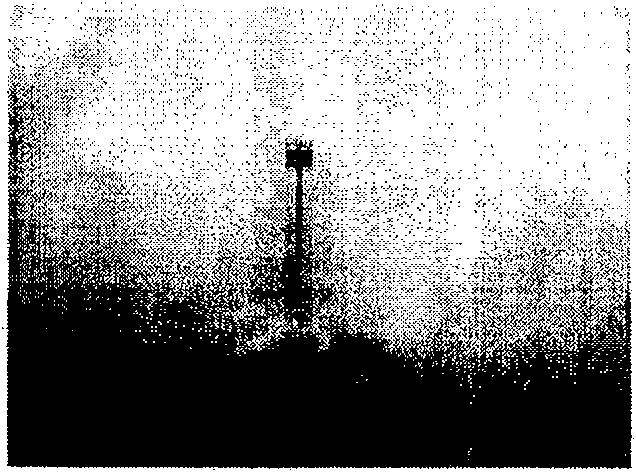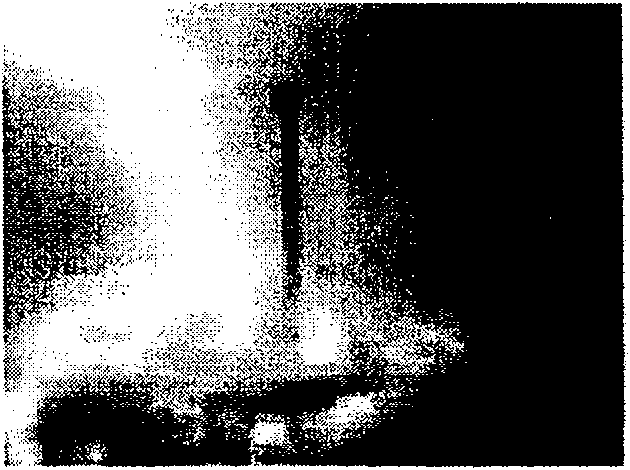Branched structure compound containing UV crosslinking reactive group and application thereof
A cross-linking reaction, branching technology, applied in the field of spherical branched structure compounds, can solve the problems of unusual chemical characteristics, difficulty in extension and improvement, too large silica cage, etc., and achieve good abrasion resistance and adhesion. , hardness and water stability improvement effect
- Summary
- Abstract
- Description
- Claims
- Application Information
AI Technical Summary
Problems solved by technology
Method used
Image
Examples
preparation example 1
[0056] The first stage:
[0057] 2.55g (10mmol) three (2,3 epoxypropyl)-isocyanurate (TGIC, tris (2,3-epoxypropyl) isocyanurate) and 3.75g (36mmol, 1.2 equivalents) diethanolamine (diethanolamine) After stirring at room temperature for three hours, a violent exotherm occurs. Control the temperature below 120°C. After the end of the exotherm, control the reaction temperature at 100°C and continue the reaction for 10 hours. Follow the reaction with FT-IR (Fourier Transform Infrared Spectroscopy) , to be 3050 ~ 3000cm -1 (signal of N-H) and 950~810cm -1 (Signal of the epoxy group) disappears to indicate that the reaction is complete, and the reaction formula is as follows:
[0058] (Reaction 1)
[0059] second stage:
[0060] 17.28g (90mmol, 1.5 equivalents) of 1,2,4-benzenetricarboxylic anhydride (trimelticanhydride, TMA) and 100mL of N-methyl-α-pyrrolidone (NMP, N-methyl-α-pyrrolidone) were added to the above reaction and React at 90°C for 4 hours, track the reaction wit...
Embodiment 1
[0067] Use photoinitiator (2-hydroxyl-1-phenyl-1-acetone), photocurable monomer (BHT, TGD), and dendritic compound of the present invention (Preparation Example 1) to form photocurable ink in different proportions The basic formulation of the photoinitiator is based on weight (1 part), BHT is fixed at 0.04 part, and the ratio of TGD and dendrite of the present invention is adjusted to form implementation formulas 1-3.
[0068] Table 1
[0069] recipe number
[0070] Then, according to the table below, the implementation formulas 1-3, co-solvent, and surfactant were mixed and stirred for ten minutes. The co-solvent is 2-pyrrolidone (2-pyrrolidone, 2PO), and the surfactant is preferably BYK 333 sold by BYK Company. Add the above mixture to water, and stir with a high-speed homogenizer at 5,000 rpm for 5 minutes and wait for the foam to disappear. The three formulations were coated on glass with a doctor blade to form a 25 micron thick film and baked at 110°C for 60 min...
Embodiment 2
[0083] Mix and stir the implementation formulas 1-3 and the pigment concentrates of L1R1, L1G03, and L1B14 to measure their properties. Grind red pigments such as Pigment Red 21, Pigment Green 03, and Pigment Blue 15:3 to obtain self-made pigments L1R21, L1G03, and L1B14. The physical properties are as follows:
[0084] table 5
[0085] paint color
[0086] Add the same proportion of water (7.57%), 2PO (20.83%), and surfactant BYK333 (both 0.8%) to implementation formulas 1 to 3 (Example 1) and comparative formulas 1 to 3 (Comparative Example 1). , after self-made pigments (all accounting for 58.3%), stir for 15 minutes to form the inkjet ink composition, form a 25 micron thick ink film on the glass with a scraper and bake 60 minutes with 110 ℃, then with 170 After baking at ℃ for 45 minutes, UV light was irradiated to cure the ink film, and the hardness test was performed as shown in Table 6.
[0087] Table 6
[0088] ink number
[0089] The above table...
PUM
| Property | Measurement | Unit |
|---|---|---|
| surface tension | aaaaa | aaaaa |
| hardness | aaaaa | aaaaa |
Abstract
Description
Claims
Application Information
 Login to View More
Login to View More - R&D
- Intellectual Property
- Life Sciences
- Materials
- Tech Scout
- Unparalleled Data Quality
- Higher Quality Content
- 60% Fewer Hallucinations
Browse by: Latest US Patents, China's latest patents, Technical Efficacy Thesaurus, Application Domain, Technology Topic, Popular Technical Reports.
© 2025 PatSnap. All rights reserved.Legal|Privacy policy|Modern Slavery Act Transparency Statement|Sitemap|About US| Contact US: help@patsnap.com



